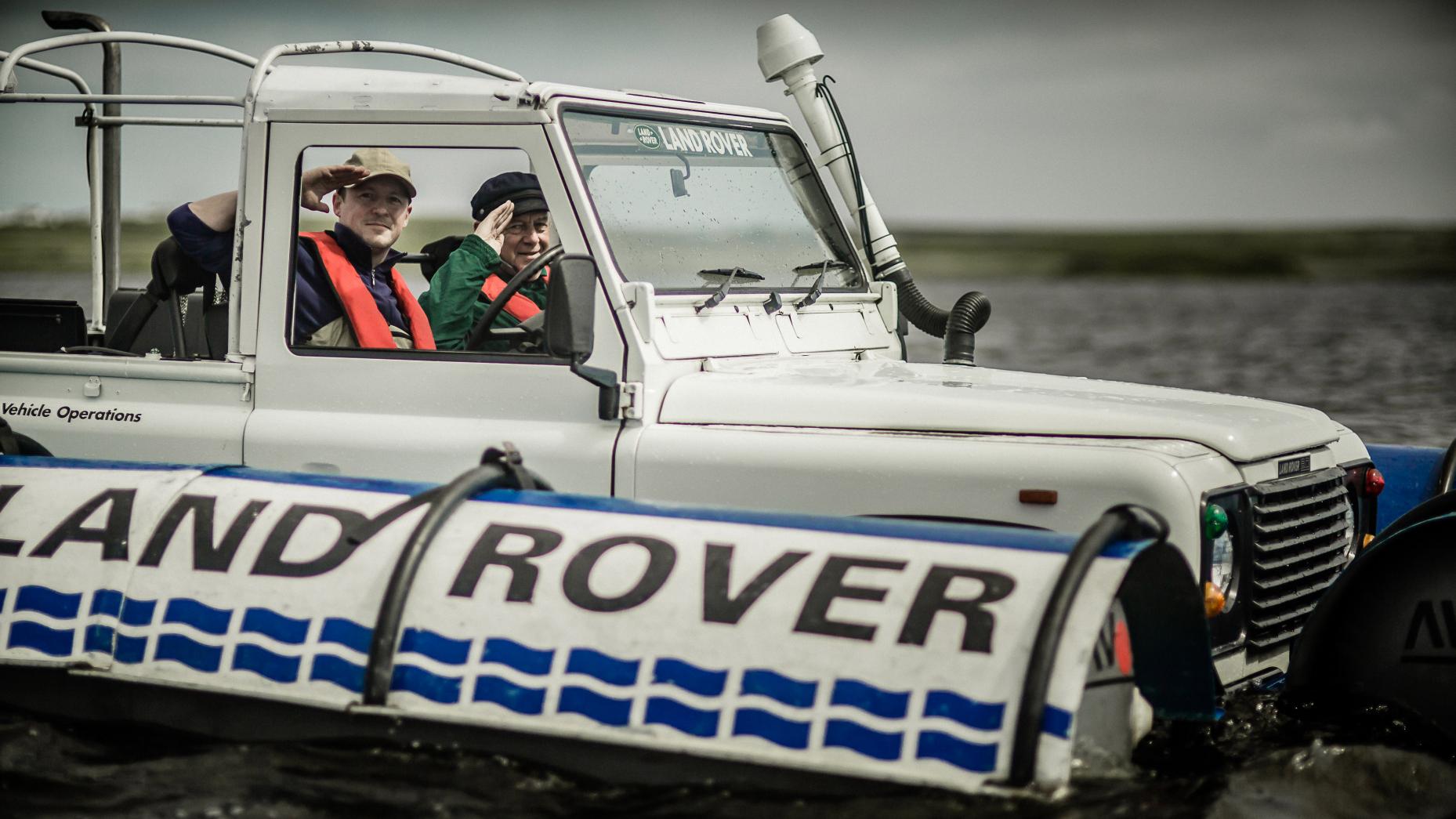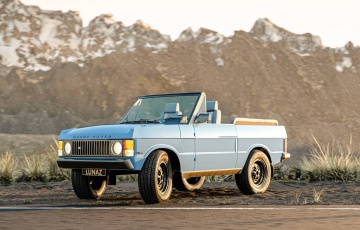Driving Land Rover's 'Floating Ninety' Defender... on a Scottish loch

There's something earthy about the Land Rover Defender, like it's part of the very soil of Britain. Lord knows it's traversed its fair share of fields and farmland, from Stornoway to Surrey and beyond.
It was even conceived in the land, as a sketch in the sand in the Forties, and since then it has weathered wars, carried explorers and been a runabout for the monarchy, James Bond and Sir Winston Churchill.
Early versions were painted with military surplus paint left over from Supermarine Spitfires, it was built in a wartime shadow factory, and it soon became a British Army favourite.
In fact, it's hard to imagine anything more patriotic, other than Mary Berry wrapped in a Union Jack bursting out of a giant sponge cake to the strains of Elgar.

But this year is the trusty Defender's last. The model as we know it will soon be replaced by a modern version with sound insulation and electronic gadgetry and a sensible driving position.
It will be a million times better but also worse in every way, because nothing can replace the feeling, nor the smell, of driving the old one down a mucky lane with an ancient collie in the back.
But before it goes, and despite being almost 70 years old, there's something we should do. This national treasure must be officially confirmed, with a baptism of sorts, in the holy, trout-filled waters of a Scottish loch.

The Defender has been many things, from a battlefield ambulance to a Rapier missile launcher. In 1989, it also became an amphibian, when Land Rover's Special Vehicle Operations department turned one into a floating billboard for the company's sponsorship of Cowes Week.
The donor car was actually a Land Rover Ninety (the Defender name hadn't yet been adopted), which was itself built to celebrate the brand's 40th birthday.
The design was copied from a batch of amphibious Series II prototypes, supplied to the Army in the Sixties, possibly for anti-Soviet operations in the Rhineland. It still exists today, and we've managed to wangle the keys.

In terms of nautical technology, the Floating Ninety is more of a river raft than an ocean liner. Rather than converting the chassis into a seaworthy hull, the engineers instead sealed the cabin with fibreglass and fitted inflatable pontoons for buoyancy.
So in fact it's a two-in-one hybrid ' the flotation paraphernalia can be removed, deflated and stored in the car, meaning that most of the time it's a regular, road-going Landie, if a regular, road-going Landie had a permanent propeller and a flappy rudder on the back.
Other mods are minimal: the rear suspension has been chocked to prevent it dragging in the water, it breathes through a snorkel and the exhaust sticks upwards or else it would blow bubbles into the water and suffocate the 2.5-litre diesel.

On the road, it's very much like any old Land Rover - maybe a bit stiffer than usual thanks to the solid rear suspension, but otherwise stoic and dependable. It feels very much at home in the Scottish wilderness, on this northwestern tip of Islay, home of peaty whisky and well-worn cagoules.
Somewhere around Aruadh we leave the road and venture down a stony track towards Loch Gorm, where we'll launch from the pebbly shore.
First we must peel off the roof and pop the Ninety into Aqua mode, which means constructing the black steel frame that holds the pontoons. It takes one hour, nine hundred bolts and eventually resembles a giant tarantula with barrels tucked under its legs.

Once finished, it's impossible to open the doors, so I climb up the framework and into the cockpit - sorry, bridge - taking my position at the helm where I'll receive excellent instruction from Roger Crathorne, a former engineer and Land Rover royalty who once skippered this very craft along the entire length of the Caledonian Canal and Loch Ness, so he knows her well (I use the term 'her' in the traditional maritime sense, not the 'old girl' context preferred by owners of crusty vintage cars).

Bearing in mind TopGear's sinky history with amphicars, I approach the water steadily, low-range 'box in first gear, letting her creep over the bumpy shore until we're up to our wheelnuts in water.
Now it's time to pull the lever under my left thigh, which engages the power take-off ' a device that literally takes some power from the engine and sends it to the propeller. It powers some piece of agricultural machinery when the Defender's on light tractor duty, but today it'll give us lots of lovely propulsion in the water.
As we go deeper, the front wheels become light as the floats take the weight. When the rear wheels do the same, I change out of low range, into third gear and give it some throttle - the wheels still churn away, but the prop's pushing us forwards.

'Head over there,' says Captain Crathorne, pointing towards a miserable-looking squall in the distance. So I spin the steering wheel and nothing happens except he rolls his eyes.
Turns out I'll be needing the tiller now, which is positioned between us and runs back to the rudder. Push left to go right, pull right to go left, or move it either way to do donuts that certainly don't impress the boss.
At full throttle the diesel chugs along like a car ferry, the waves slap the fibreglass floor and there's only a small amount of leakage, but that could be down to old age'
It has the hydrodynamic qualities of a thatched cottage, but it works rather well and goes where you ask it. The speedo is useless on water but I'm told it'll do six knots flat-out, and going by the bow wave we're pushing along I don't doubt it. In choppy waters we even need the wipers.

While stopped for a spot of fishing, Roger dispenses a history lesson. The story goes that, sometime around World War II, Maurice Wilks, chief engineer of the Rover Company, owned a jacked-up Rover 10.
He would bring it here to Islay, where he had an estate with a faithful gamekeeper. Due to its surprising off-road ability, the said keeper called the car the 'Land' Rover, and that's how the name came about.
It also demonstrated the need for a more appropriate, purpose-built civilian off-roader, which lead Wilks to create the Series I prototype in 1947.

And here we are, 68 years later, sailing its descendant across a loch near that very estate, diesel fumes wafting from the tall exhaust. Is there anywhere the Defender can't go?
Over the years it has conquered the jungles of Borneo, the swamps of Central America, the deserts of Africa, the dunes of Arabia, the frozen tundra of northern Russia and pretty much the entire Australian outback. And the mountains of Afghanistan with three English housewives on board. And that's just the abbreviated list.
This year might finally mark the end of the road for the original Land Rover, but ' you know what? ' that's never stopped it before. Especially when it has pontoons.
PHOTOS Steven Cassidy
This feature was originally published in the October 2015 issue of Top Gear magazine









